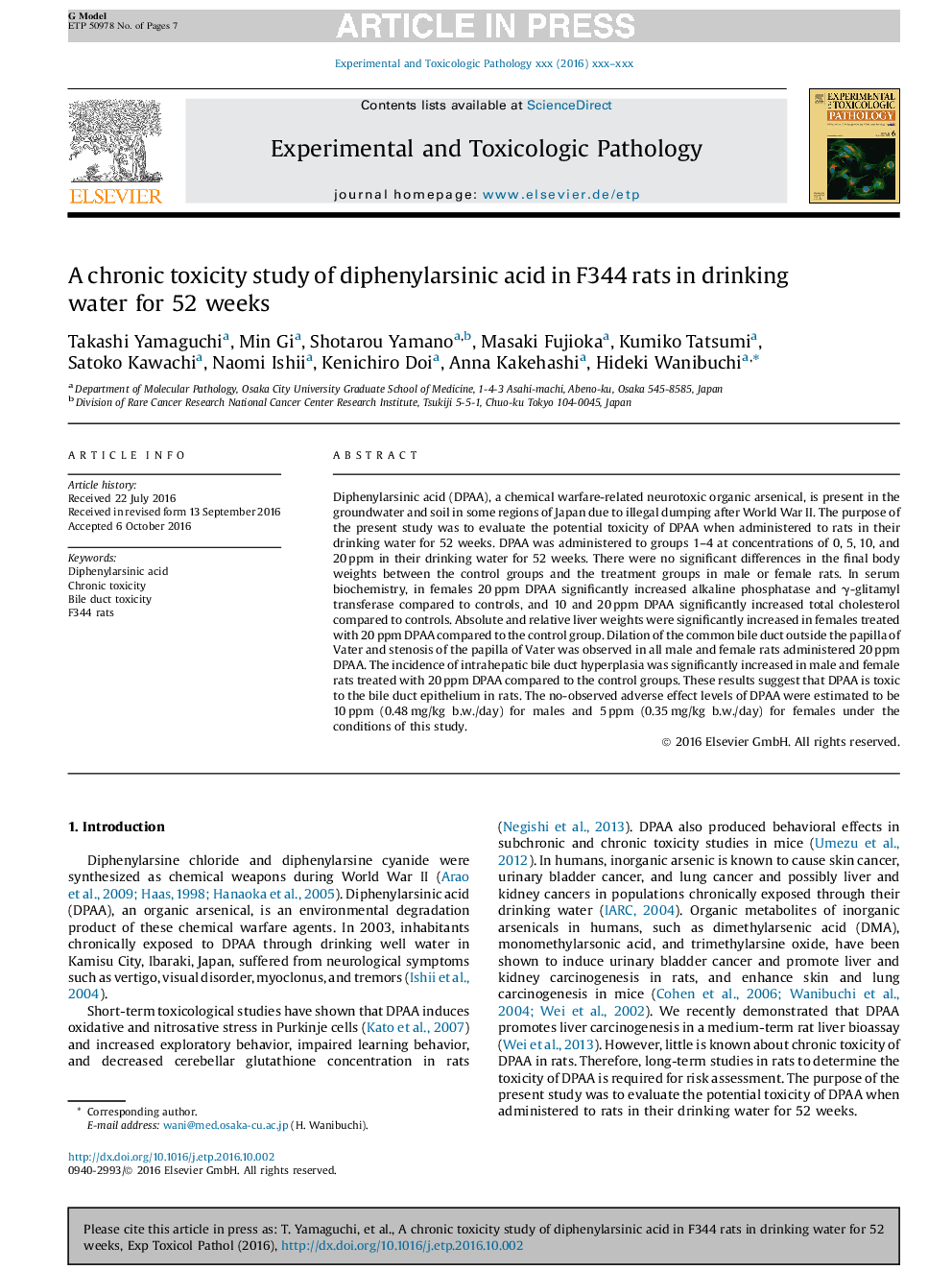| Article ID | Journal | Published Year | Pages | File Type |
|---|---|---|---|---|
| 5549833 | Experimental and Toxicologic Pathology | 2017 | 7 Pages |
Abstract
Diphenylarsinic acid (DPAA), a chemical warfare-related neurotoxic organic arsenical, is present in the groundwater and soil in some regions of Japan due to illegal dumping after World War II. The purpose of the present study was to evaluate the potential toxicity of DPAA when administered to rats in their drinking water for 52 weeks. DPAA was administered to groups 1-4 at concentrations of 0, 5, 10, and 20 ppm in their drinking water for 52 weeks. There were no significant differences in the final body weights between the control groups and the treatment groups in male or female rats. In serum biochemistry, in females 20 ppm DPAA significantly increased alkaline phosphatase and γ-glitamyl transferase compared to controls, and 10 and 20 ppm DPAA significantly increased total cholesterol compared to controls. Absolute and relative liver weights were significantly increased in females treated with 20 ppm DPAA compared to the control group. Dilation of the common bile duct outside the papilla of Vater and stenosis of the papilla of Vater was observed in all male and female rats administered 20 ppm DPAA. The incidence of intrahepatic bile duct hyperplasia was significantly increased in male and female rats treated with 20 ppm DPAA compared to the control groups. These results suggest that DPAA is toxic to the bile duct epithelium in rats. The no-observed adverse effect levels of DPAA were estimated to be 10 ppm (0.48 mg/kg b.w./day) for males and 5 ppm (0.35 mg/kg b.w./day) for females under the conditions of this study.
Related Topics
Life Sciences
Agricultural and Biological Sciences
Animal Science and Zoology
Authors
Takashi Yamaguchi, Min Gi, Shotarou Yamano, Masaki Fujioka, Kumiko Tatsumi, Satoko Kawachi, Naomi Ishii, Kenichiro Doi, Anna Kakehashi, Hideki Wanibuchi,
